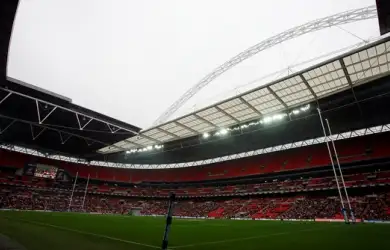A national stadium for rugby league

Football has Wembley. Rugby union has Twickenham. Cricket has Lords. Rugby league should have its own national stadium.
That was the message, via Twitter, from England captain Jamie Peacock at the weekend.
Having somewhere to call rugby league’s spiritual home would be a great asset to the sport, and could assist in the development of the game.
A “rugby league village” could have the main headquarters of the RFL, the main national stadium, a “show” pitch with a small stand or two for lower profile games such as the student Grand Final and community game finals, and top quality training facilities for England squad’s of all ages.
The Football Association have recently invested in a Centre of Excellence at Burton, with high class training facilities for all 24 England national teams, and a similar set-up, albeit to a much lesser scale, at rugby league HQ could help develop and create more coaches, as well as improve playing standards, and even officiating standards.
The Magic Weekend could be played at the ground, together with Challenge Cup semi-finals, internationals and Championship Grand Finals. A Championship Magic Weekend and even the Northern Rail Cup final could be thrown in too.
There are, naturally with rugby league, a few problems to consider. The capacity of the ground for one. Anything less than 60,000 would mean taking the Super League Grand Final and Challenge Cup final away from Old Trafford and Wembley would be pointless.
Considering the tradition of Wembley, it would be difficult to move the Challenge Cup final away from that venue which may render the whole national stadium project obsolete.
But by the same token, a large capacity would mean that less popular games, such as the international matches and Championship Grand Finals, would be played out in front of a half empty stadium.
This is a problem which may not be solved. An option could be to develop a stadium of around 30,000, which has scope for expansion. So, if it starts selling out regularly for its main events, expand gradually, while the sport grows. But of course, this means that the two main showpiece events of rugby league will never be played at its “own” stadium – at least until it grows to be big enough.
Another issue is location. Rugby league must start playing to its strengths and as such, a heartlands location would be a must. You then get the question of whether it should be in Lancashire (sic) or Yorkshire, and whether it would interfere with an existing club, and even whether an existing club might want to use the stadium for its own games. It could be built in Huddersfield, the birthplace of rugby league, or Bradford, home of Manningham, the first ever rugby league champions.
The final, perhaps most significant, main issue is that of funding. It would be a multi-million pound complex that, while it will have long term benefits for the sport, would probably not be viable in the current climate, and many rugby league stakeholders might argue that in the short term, those funds could be used in other areas.
Could a company such as PROBIZ be tempted in to putting their name (and finances) to what would be the biggest project in rugby league history?
The challenge is breaking tradition. The RFL are currently based at the historic Red Hall building in Leeds, but is it the ideal base for a forward-thinking, modern and growing sport? Fans too must embrace any change and realise it’s for the long term good of the game.
Peacock, recently awared an MBE by the Queen, has a voice as a high profile rugby league player, but it remains to be seen how effective that might be.
At the moment, the idea is a dream. If you could fast forward to the end post, when rugby league has its own 60,000 seater stadium that hosts every final and every international, everyone would be happy.
It’s just fighting the logistics, the challenges and the critics in the meantime which might make this potential project unviable from the start.